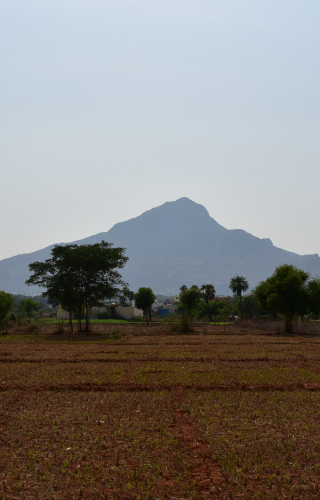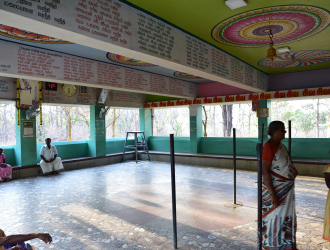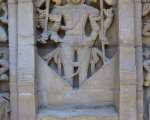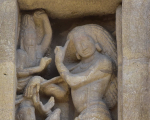The intense, intimate relation with God that we associate with Bhakti is first seen in the hymns composed from the sixth century CE by the Alvar and Nayanmar, or Vaishnava and Saiva poets of Tamil Nadu. The works of the Saiva poets were canonized in the Tirumurai after the 12th century. This represents 27 poets, of whom the earliest is the only woman, Karaikkal Ammaiyyar (sixth century, Book 11), and the last is Cekkilar (12th century, Book 12), author of the Periyapuranam, life stories of 63 Nayanmar. The first seven books of Tirumurai are known as the Tevaram, and represent the work of four poets (‘Naalvar’): the seventh-century poets, Thirunavukarasar or Appar (Books 4–6) and Thirujnanasambandar (Books 1–3), Nambi Arurar or Sundaramurti in the eighth century (Book 7) and Manikkavacakar in the ninth century (Books 8 & 9).
The hymns of Appar, Sambandar and Sundarar are condensed expressions of wonder and delight in Siva’s beauty, his grandeur as revealed in stories from Tamil and Sanskrit Puranas, and his grace (‘arul’) as encountered in stories of his acts for his devotees and the speaker’s own experience of His love. The personal tone deepens in Manikkavacakar’s Tiruvachakam, which interweaves references to the poet’s life, and moments of self-doubt or distraction by worldly pleasures.
Traditionally, the hymns are classified by pan (musical scale) as well as in terms of the place each set of hymns refers to. The term ‘padal pettra sthalam’ (‘place that holds the song’) captures the conception of Siva as manifest at a particular place at a particular time for the sake of His worshippers. Historically, the temples we see today were built only after the eighth century, and their sthalapuranas or foundational myths were written only after the 15th century. Yet the Tevaram hymns’ refraction of myths of Siva’s local manifestations, and the Periyapuranam’s delineation of their own personae form a series of interpretations that shape our perception of Siva in His temples today.
From the extensive and inter-referential body of literature and sacred spaces (the Tevaram alone comprises some 800 hymns that refer to 276 shrines), we look at five sites known as the Panchamahabhuta temples: Ekambareshwar in Kanchipuram, Jambukeshwar in Tiruvannaikaval, Arunachaleshwara in Tiruvannamalai, Srikalahasti (Andhra) and Chidambaram.
Sahapedia is grateful to Bajaj Autos Pvt. Ltd. for the grant that made possible the documentation for this photo essay.
















